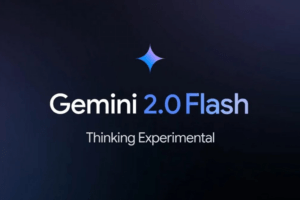In the global effort to combat climate change, the spotlight often shines on splashy renewable energy projects and electric vehicles. But an unsung hero has been quietly optimizing power behind the scenes: AI-powered power management.
This overlooked technology is optimizing how we produce, distribute, and consume energy across the board. As a result, it’s reducing emissions, saving money, and bringing us closer to a sustainable future.
In this post, we’ll explore the environmental benefits of AI-powered power management and why it deserves more attention as a sustainability game-changer.
Reducing Emissions Through Efficient Energy Use
As the world continues to rely heavily on fossil fuels like coal and natural gas, the emissions from power generation remain a major contributor to climate change. In fact, the CO2 emissions from electricity and heat production account for over 40% of global greenhouse gas output.
AI-powered solutions are curbing these emissions through:
- Predictive maintenance to prevent equipment failures and wasted energy
- Demand response that adjusts usage based on real-time needs
- Smart grid integration for smoother coordination of renewable sources
Together, these techniques are optimizing when, where, and how we produce and consume power. With increased efficiency across the board, we simply need less energy overall, resulting in fewer emissions.
Predictive Maintenance: An Ounce of AI Prevention
Unexpected equipment failures don’t just cause power disruptions – they also force the use of inefficient backup generators relying on dirty fuels like diesel. The result? Massive spikes in emissions.
AI predictive maintenance flips the script by analyzing performance data to identify parts needing replacement before they fail. This prevents both power interruptions and the excessive emissions from stopgap power sources.
Demand Response: Flexibility Through AI Agility
Electricity demand fluctuates by the hour, but traditional power plants lack flexibility. To accommodate peak demand, utilities rely on “peaker plants” – expensive generators designed for temporary use that have appallingly high emissions.
With AI-powered demand response, energy use can adapt in real-time based on need. By automatically dialing usage up or down, the system reduces reliance on damaging peaker plants to meet demand spikes.
Smart Integration: Smoothing Out Renewable Power
The intermittent output of renewables like solar and wind poses integration challenges. But AI-powered software helps smooth things out by predicting renewable energy generation and adjusting the grid to optimize storage and distribution.
The result? Renewables can supply more of the total energy mix, reducing the demand for greenhouse gas-emitting sources.
Conserving Resources Through Efficient Power Management
In addition to emissions, generating electricity consumes massive amounts of natural resources – especially water for thermoelectric cooling. But just as AI can optimize emissions, it can also help us use resources more efficiently.
Specifically, AI-driven power management conserves resources by:
- Reducing overall energy demand to cut fuel usage
- Enhancing renewable utilization to preserve non-renewables
- Improving grid resource allocation to minimize waste
Cutting Demand: Smaller Energy Appetite, Less Fuel Needed
When AI pinpoints energy savings across buildings, machinery, and devices, it shrinks our collective appetite for electricity. In turn, power plants need less raw fuel to feed that appetite.
For a planet still dependent on coal and natural gas, using AI to curb demand can put a meaningful dent in the quantity of resources extracted and combusted each year.
Optimizing Renewables Use: Capitalizing on Clean Energy
Renewables like wind and solar produce emissions-free power. But due to intermittency issues, they often operate at less than full potential. AI overcomes this through predictive modeling and adaptive management, so that clean energy saturates the grid whenever available.
This both minimizes curtailing of renewable sources while reducing the backup power needed from fossil fuels – ultimately preserving non-renewable resources.
Balancing the Budget: Cutting Grid Resource Waste
Power distribution challenges lead to significant energy waste, forcing excess fuel expenditure to compensate for losses. But AI can detect and resolve many issues early, from transformer failures to voltage deviations.
With proactive corrections enabled by AI, wasted energy plummets across transmission infrastructure. That directly translates to fuel and water savings at power plants.
Protecting Ecosystems by Reducing Power Impacts
Beyond emissions and resources, generating and transmitting electricity can inflict other environmental damage, including:
- Habitat loss from infrastructure encroachment
- Water pollution from power plant discharges
- Wildlife disruption from transmission lines
By driving broad efficiency gains that curb energy demand and infrastructure needs, AI-optimized power management also alleviates threats to vital ecosystems.
Safeguarding Habitats: Dialing Back Energy Sprawl
More power demand historically meant more infrastructure expansion into wildlife areas. But AI can stretch existing supply further through efficiency, reducing the habitat destruction previously seen from mines, power plants, and energy transport.
Protecting these natural areas avoids devastating species extinction cascades while preserving CO2-absorbing green spaces.
Clean Water: How AI Stems the Power Plant Outflow
The water discharged from plants after cooling and other uses introduces chemical, thermal, and particulate pollution into waterways. But just as AI slashes power plant fuel usage, it also lowers plant water needs – cutting wastewater production.
The outcome? Healthier aquatic ecosystems with less compromised water quality and biology.
Reducing Transmission Disruption of Wildlife
Finally, vast transmission infrastructure like power lines and pipelines cut through critical animal habitats and corridors. But by enabling distributed renewable generation close to demand centers, AI slashes the long-distance energy transport requiring these disruptive projects.
With fewer encroaching infrastructure tentacles, ecosystems benefit from fewer barriers and reduced disturbance for vulnerable species.
Unlocking the Full Potential of AI Power Management
The environmental benefits revealed already are just an initial glimpse of what comprehensive AI adoption could achieve across global power infrastructure. And analysts project the global market size for energy and utility AI solutions will grow over 20% annually through 2028.
Realizing the full emissions reduction and sustainability potential will depend on advancing AI through:
- Better Data Collection: Building out sensor capabilities and analytics platforms
- Increased Grid Integration: Upgrading critical infrastructure with AI capabilities
- Policy Support: Funding innovation and removing adoption barriers
With the right progress in these areas, AI-powered management will optimize every facet of power at a system-wide level – achieving sustainability improvements well beyond what piecemeal efficiency measures could attain.
The Outlook: AI Critical for Climate Goals
While prominently discussed strategies like electrification and renewable energy buildout are vital for a livable climate future, equally pressing is the mission of “doing more with less.” AI-driven power management delivers on precisely that by multiply maximizing our use of every unit of energy.
Without the global efficiency boost unlocked by AI, the sheer scale of renewables required to displace fossil fuels could face steeper land constraints, biodiversity impacts, and reliability challenges.
In short, AI isn’t just facilitating sustainable power – it’s becoming essential to make sustainability itself actually sustainable. That’s why this unsung hero deserves recognition as a leading solution for both the climate and our threatened natural world.
















Add Comment